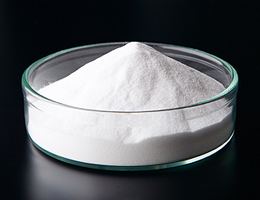Formula (NH4)10(H2W12O42)·4H2O Boiling point 600 °C | Molar mass 3,132.2 g/mol Appearance White crystalline powder | |
 | ||
Ammonium paratungstate (or APT) is a white crystalline salt of ammonium and tungsten, with the chemical formula (NH4)10(H2W12O42)·4H2O.
Contents
Ammonium paratungstate is produced by separating tungsten from its ore. Once the ammonium paratungstate is prepared, it is heated to its decomposition temperature, 600 °C. Left over is WO3, tungsten(VI) oxide. From there, the oxide is heated in an atmosphere of hydrogen, reducing the tungsten to elemental powder, leaving behind water vapor. From there, the tungsten powder can be fused into any number of things, from wire to bars to other shapes.
Structure
In more recent literature (post World War II period), the anion in (NH4)10(W12O41)·5H2O has been shown to be [H2W12O42]10−, containing two hydrogen atoms, keeping two hydrogen atoms inside the cage. The tungsten-oxygen cage, that is the heart of the anion requires 42 oxygen molecules. The correct formula notation for ammonium paratungstate is therefore (NH4)10[H2W12O42]·4H2O. The [H2W12O42]10− ion is known as the paratungstate B ion, as opposed to the paratungstate A ion, that has the formula [W7O24]6−, similar to the paramolybdate ion. The existence of the paratungstate A ion, could not be confirmed by NMR spectroscopy, however.
Before about 1930, there has been some dispute about the exact composition of the salt, and both (NH4)10W12O41 and (NH4)6W7O24 were proposed. O.W. Gibbs remarked about this:
"The alkali tungstates are numerous and unusually complex. Salts of essentially different formulae approach so closely in percentage composition, that the differences lie very near the unavoidable errors of analyses. The analyses are hardly sufficiently close to decide the question upon purely analytical grounds."Synthesis
When concentrating an ammoniacal solution of tungstic acid (i.e. hydrous WO3), the product obtained is ammonium paratungstate. Below 50 °C, the hexahydrate is formed, whereas when the temperature of the solution is above 50 °C, the pentahydrate or heptahydrate is formed. The former crystallizes as triclinic plates or prisms, whereas the latter as pseudorhombic needles.
If a calcined WO3 is used, refluxing the ammonia solution is advisable to speed up the dissolution of the oxide.
